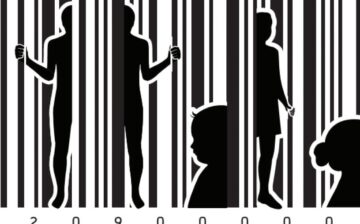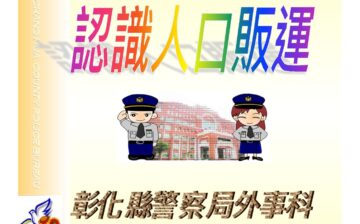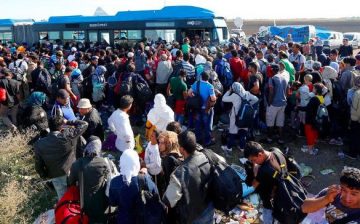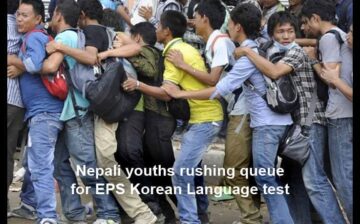Posts Tagged: Page 2

Where the Crossroads of Abuse Meet: Domestic Violence and Trafficking
In light of Domestic Violence Awareness Month, it is only fitting to talk about the stark connection between domestic violence and human trafficking. While seemingly two separate issues, domestic violence and trafficking are intertwined more often than not.

Expanding Legal Options for Foreign National Trafficking Victims
Both U.S. Citizens and Foreign Nationals can be victims of human trafficking in the United States. Foreign National victims of human trafficking may sometimes be living within the United States in an undocumented immigration status. To address the particular vulnerabilities of these victims, the Trafficking and Victims Protection Act creates certain immigration protections for foreign national trafficking victims so that they remain legally within the United States.

Nepal’s Earthquakes, ‘Orphans,’ and Volunteers
In the aftermath of the earthquakes in Nepal in April and May, social media was flooded with people raising money for various relief efforts, including children’s care homes, disaster relief operations, and volunteer assistance trips to child orphanages in Nepal. While well intentioned, many failed to realize the true impact their volunteering or donations to children’s care homes post-earthquake might have as child care homes in Nepal come under scrutiny for their possible links to child exploitation and child trafficking.

Refugees and Trafficking: A Dangerous Nexus
The current crisis of Syrian refugees migrating to bordering states and Europe has commanded the attention of the media. From images of 3-year-old Aylan dead on the shores of Turkey to the tables of the European Commission, this issue has become global. However, seldom discussed is the stark connection between trafficking and refugees.
Pope Francis and Human Trafficking
This week, Pope Francis will be visiting the United States and touring Washington D.C., Philadelphia, and New York City. During his time here Pope Francis will be addressing Congress and the United Nations General Assembly. There has been much speculation about what the Pope will say in these remarks and during this trip. Despite the uncertainty about his exact remarks, one thing is for sure: this Pope has dedicated more attention to the discussion of human trafficking than any other Pope or world religious leader before him.

When is youth labor migration actually child trafficking?
The 2008 financial crisis and global recession affected individuals all over the world, but it may have hit global youth the hardest. Youth unemployment rose immediately, hitting 12.7 percent in 2009. When global recovery weakened in 2012 and 2013, it further aggravated the problem of youth unemployment. At the moment, it is estimated that 73 million young people are unemployed worldwide, and youth are three times more likely to be unemployed than adults. And analysts predict that the number unemployed youth will continue to rise.
Anti-Trafficking Activists Fight Against Backpage.com
Last week, anti-trafficking advocates fighting Backpage.com, the classified advertising website that has been accused of facilitating commercial sexual exploitation of children, gained a hard-fought legal victory. In Washington State, the state Supreme Court ruled in a 6-3 decision that Backpage could be held accountable for commercial sexual exploitation in the case of three girls sold on the site. The girls, who were 13 and 15 when they were sold for sex online, will have their claim for damages against Backpage.com move forward in a court of law.
Eliminating Trafficking & Forced Labor from Supply Chains: New Legislative Trends
The existence of forced labor and human trafficking in a company’s supply chain represents the newest frontier of the global effort to eliminate forced labor and human trafficking. Supply chains are systems of organizations, people, activities, information, and resources involved in moving a product or service from supplier to customer. They transform natural resources, raw materials, and components into a finished product that is delivered to the end customer.
Improving State Trafficking Laws
The Trafficking and Victims Protection Act (“TVPA”) and its subsequent reauthorizations provide the United States government with the federal framework to regulate anti-trafficking policy and trafficking victim service provisions. However, there are also state laws in place to address human trafficking. Currently all 50 states have laws criminalizing human trafficking. Yet this is a new development, because as recently as 2004, only four states had human trafficking laws. The tipping point came in 2011-2012 when 28 states passed human trafficking laws. While all states now have anti-trafficking laws, some states nominally address labor trafficking and still others prioritize sex trafficking of minors and as such need to be augmented.
Faces of Labor Trafficking in the United States
Human trafficking generates extensive national interest and media coverage in the United States, but that attention often focuses solely on sex trafficking. In addition to incidents of sex trafficking, there are also cases of labor trafficking and labor exploitation that happen every day in the United States. U.S. citizens, foreign nationals, women, men, and children can be victims of labor trafficking. Immigration status, recruitment debt, isolation, poverty, and a lack of strong labor protections are some of the vulnerabilities that lead to labor trafficking in the United States. Given the diversity of environments that labor trafficking can occur within the United States, it is important to understand more about labor trafficking and who is particularly vulnerable.
